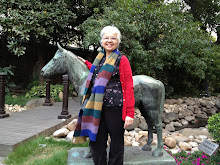Some principles that can be helpful in ensuring that struggling learners maximize their capacity in school are: look for the struggling learner’s positives, don’t let what’s broken extinguish what works, pay attention to relevance, go for powerful learning, teach up, and see with the eyes of love.
Carol A. Tomlinson
Tomlinson’s attitude toward teaching warms the hackles of my heart. My goal in writing for children is to provide math concepts in the guise of an adventure story with auditory, kinesthetic and visual clues. Children learn by touching, listening and talking, and by looking. Walter Barbe, a pioneer in the study of learning styles, believes most children rely heavily on only one of these learning modalities. Maturity and experience seem to explain why more adults tend to exhibit mixed learning styles. “We are born,” Barbe states, “with certain characteristics that contribute to our later learning strengths. The experiences we encounter early in life, such as nutrition, stimulation and interactions with other children and adults, may also influence which learning channels will be strongest.” The wise teacher does not value one learning style above the others—although being able to process information visually does put a child at an unfair advantage in most classrooms. I love Tomlinson’s idea of looking for a child’s positives with eyes of love! I interpret that to mean celebrating children’s individual learning styles and presenting the same information in different ways.
I am an auditory learner. You suppose that’s why I’m a story teller? No surprise that unless I’m careful, when I teach I talk and talk and talk and talk. I remember one bright-eyed little boy who struggled mightily in my class until I learned to stand quietly by his desk at the end of a lesson and simply work the problem on a piece of paper while he watched. I had talked the poor kid into a daze because my teaching style didn’t match his learning style. I also remember high school geometry (a subject requiring visual/spatial learning skills) with some angst. The teacher would finish each lesson by asking, “Does everyone understand but Walton?” And sure enough, Virginia Walton didn’t understand. Maturity provided experiences to strengthen my visual learning modality. Dealing with my own visual learning deficit made me a crusader for providing information in ways children with differentiated learning styles can process.
For an overview of learning styles, I recommend two fine websites:
http://homeworktips.about.com/od/homeworkhelp/a/learningstyle.htm
http://www.ldpride.net/learningstyles.MI.htm#Learning%20Styles%20Explained
References:
Barbe, W.B. Growing Up Learning.
Tomlinson, Carol A. How To Differentiate Instruction In Mixed-Ability Classrooms. 2nd ed.

No comments:
Post a Comment